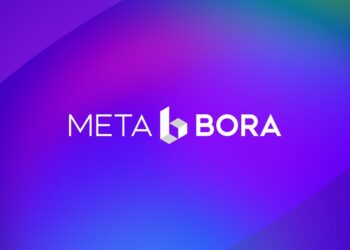Banks have been a staple in our financial lives for a long time, but there are issues with the way they operate. The interest rates and loan approval processes are often frustrating, and it seems that only the bankers themselves benefit from the current banking system.
The Mars Protocol aims to provide improved financial services, with faster transactions that are accessible to all and under the control of the user. This article explores the Mars Protocol, examining in-detail how it works and the unique advantages it offers.
What is the Mars Protocol?
The Mars Protocol is an autonomous lending and borrowing protocol powered by smart contracts. Mars was launched on the Terra ecosystem in March 2022 and has since announced its relaunch, opting to stay in the Cosmos ecosystem as its sovereign Layer 1 blockchain.
Instead of serving as a single credit protocol for a single blockchain, Mars will now serve as a credit protocol for the entire Cosmos ecosystem by leveraging the interoperability and composability that it provides. Mars can be present on any cosmos chain by constructing outposts that are interconnected and governed by the hub in a “hub and spoke” system, as shown in the image below:
Mars is an on-chain credit facility that is fully automated and governed by a decentralized community through a transparent governance process. The Martian Council, which is made up of MARS stakeholders who put money into the game to backstop certain types of protocol risk in exchange for a portion of the protocol borrowing fees, makes all decisions about how the deployed Mars smart contract system is set up.
It provides two primary services:
- Making borrowing and lending possible through the Red Bank
- Enabling contract-to-contract (C2C) lending in the Mars Fields allows other protocols to use the fields to leverage smart contracts for various applications, including leveraged yield farming.
How Does the Mars Protocol Work?
Mars wants to get rid of traditional banks and replace them with a decentralized system based on the Terra blockchain.
The Mars Protocol has four major stakeholders:
Lenders
Lenders deposit into the Mars liquidity pools. They can deposit only to earn interest or borrow from Mars Protocol.
Borrowers (Collateralized)
In collateralized borrowing, borrowers can borrow from the Mars Protocol by putting assets into the Mars Money Market.
Borrowers (Uncollateralized)
Here, smart contracts can be used to borrow from the Mars Protocol without putting up any collateral. The credit line of each smart contract must be approved by governance, and a credit limit will be set. This is done to reduce the risks of the Mars Protocol.
Council
Earn protocol fees and participate in governance by staking MARS.
Uncollateralized Borrowing With the Mars Protocol
In case you’re wondering how uncollateralized borrowing is possible with the Mars Protocol, that will be covered in this section.
This money market is made up of two participants:
Borrowers
Uncollateralized borrowing is a B2B (business-to-business) service, whereas collateralized borrowing is a B2C (business-to-customer) service. This means that this type of borrowing is only available for protocols and projects that are on a “whitelist.” This lowers the risk of default for lenders.
Lenders (i.e., Users)
This type of loan can be provided by anyone. The benefit of participating in this type of borrowing is that lenders earn higher interest rates than with collateralized borrowing while still receiving certain security from the protocol.

What Value Does Mars Bring to the Terra Ecosystem?
Users will be able to lend and borrow more than usual, thanks to the integration of MARS into the Terra ecosystem. Terra’s assets will be used more efficiently and effectively by using its dynamic interest model with the PID controller. Due to the success of dynamic interest rates, users will no longer need to look for other farms or protocols to get better interest rates.
Users will be able to get more from DeFi (decentralized finance) than ever before by using the first-of-their-kind leveraged liquidity mining and yield farming strategies.
Since the MARS protocol is tightly tied to the Terra ecosystem, using it will increase the use of other assets in the ecosystem, such as MIR and UST assets.
The innovative concept of leverage farming will entice an increasing number of users to use the MARS protocol. The underlying assets used in leverage farming are MIR, ANS, and UST. The more people who use the assets, the higher the price will rise.
The UST locked up in MARS insurance will reduce the circulating supply of UST. Another factor is that more LUNA is burned as more UST is minted. This increases its demand.
The Columbus-5 upgrade will make it possible for MARS to allow cross-chain smart contracts to borrow and deposit assets.
Difference Between the Mars and Anchor Protocols
Mars is a decentralized, dynamic-interest-rate credit protocol, whereas Anchor is a predictable-rate Savings-as-a-Service protocol.
Anchor relies on the yield from Proof of Stake (PoS) assets to provide users with a fixed income and thus only accepts PoS assets as collateral. Since Mars can use any asset from Terra as collateral, interest rates are set by demand and supply, as well as by Mars’ system for setting interest rates.
Anchor is a protocol for saving money with one primary goal: to make it very easy to earn a fixed rate on stablecoin deposits.
As a decentralized credit protocol, Mars is meant to make it possible to borrow and lend almost any Terra-based token. When used together, the Mars Protocol and the Anchor Protocol make all terra-based assets much more useful.

Tokenomics
The Mars protocol’s native token, $MARS, is primarily used for governance and fee sharing. In summary, users can earn MARS tokens by staking their MARS tokens.
Holders of $xMARS tokens can then earn a share of the protocol’s interest rate revenue as well as voting and proposal rights. Mars’s governance is broad, with decisions ranging from asset listing to treasury spending, risk parameters, and whitelisting new wallets.
The concept of incentivized voting is an intriguing aspect of Mars’s governance. The outcomes of their decisions, both positive and negative, have a direct impact on voters. Positive outcomes will be rewarded with MARS tokens, while negative outcomes may result in the sale of about 30% of staked tokens in the event of a shortfall.
This mechanism promotes well-reasoned decisions and reduces malicious or wasteful proposals, as voters will be financially harmed if they vote for such proposals.
Mars has also created an incentivized safety fund comprising reserve assets in the event of a shortfall. A shortfall is a scenario whereby the value of the debt of a borrower exceeds the value of their collateral, thereby leading to a lender deficit. While these events are usually found in any lending, they can collapse the infrastructure if proper care is not taken.
Mars addresses this issue by incentivizing $xMARS holders to contribute to a reserve fund pool and earn fees for their tokens staked in the pool. In the event of a shortfall, these shareholders may have to sell up to 30% of their shares to keep Mars afloat. However, with proper risk management and a steady flow of lender capital, this can be a net positive for users who are willing to take more risks.
In terms of the flow of token value, 80% of interest payments are distributed to lenders, 10% to safety fund participants, and 10% to $xMARS stakeholders. There is a total supply of 1,000,000,000 tokens, as shown in the image below:

In Conclusion
- The Mars Protocol offers several interesting features, including cross-chain capabilities, dynamic interest rates, borrowing and lending options, leveraged yield farming, and the ability to borrow without collateral.
- Like other protocols in Terra, MARS is striving to create something innovative. Leveraged farming can increase yields for users, while liquidators can also benefit from MARS.
- In the volatile and unpredictable cryptocurrency market, it can be difficult to maintain a stable utilization rate. MARS aims to address this challenge by implementing a dynamic interest rate system. All of these features will benefit the entire Terra ecosystem and the Columbus-5 upgrade, with MARS serving as the backbone for Terra.
Disclaimer: This article is intended solely for informational purposes and should not be considered trading or investment advice. Nothing herein should be construed as financial, legal, or tax advice. Trading or investing in cryptocurrencies carries a considerable risk of financial loss. Always conduct due diligence.
If you would like to read more articles like this, visit DeFi Planet and follow us on Twitter, LinkedIn, Facebook, and Instagram.
“Take control of your crypto portfolio with MARKETS PRO, DeFi Planet’s suite of analytics tools.”





















